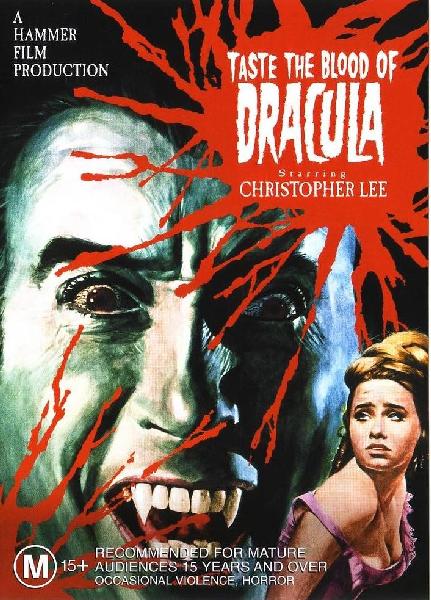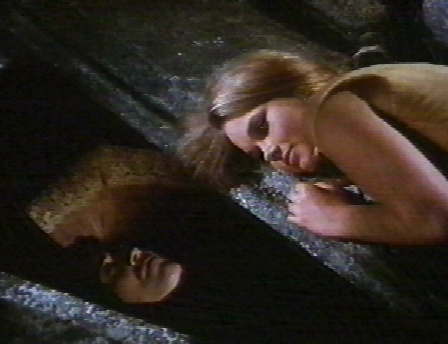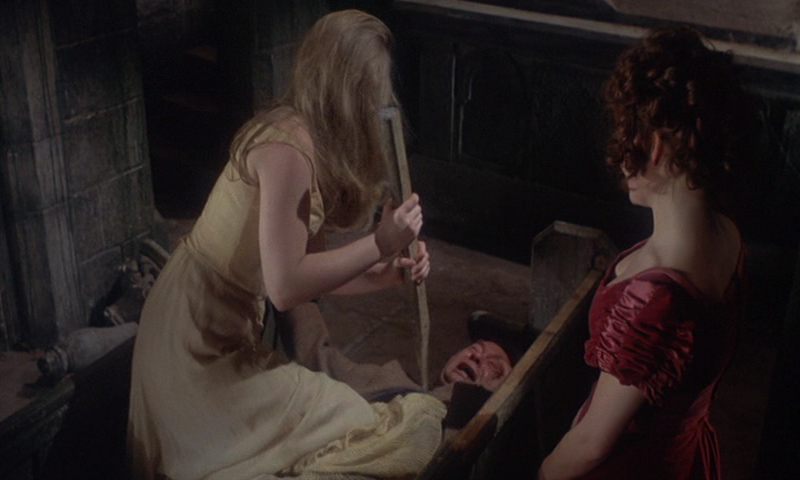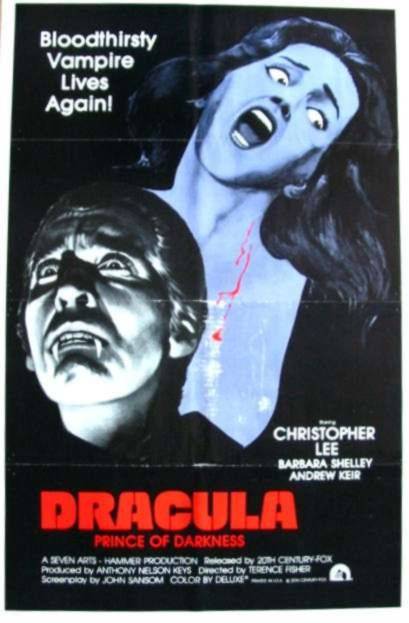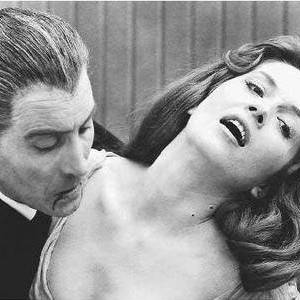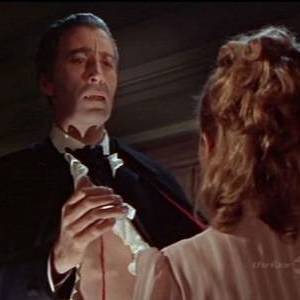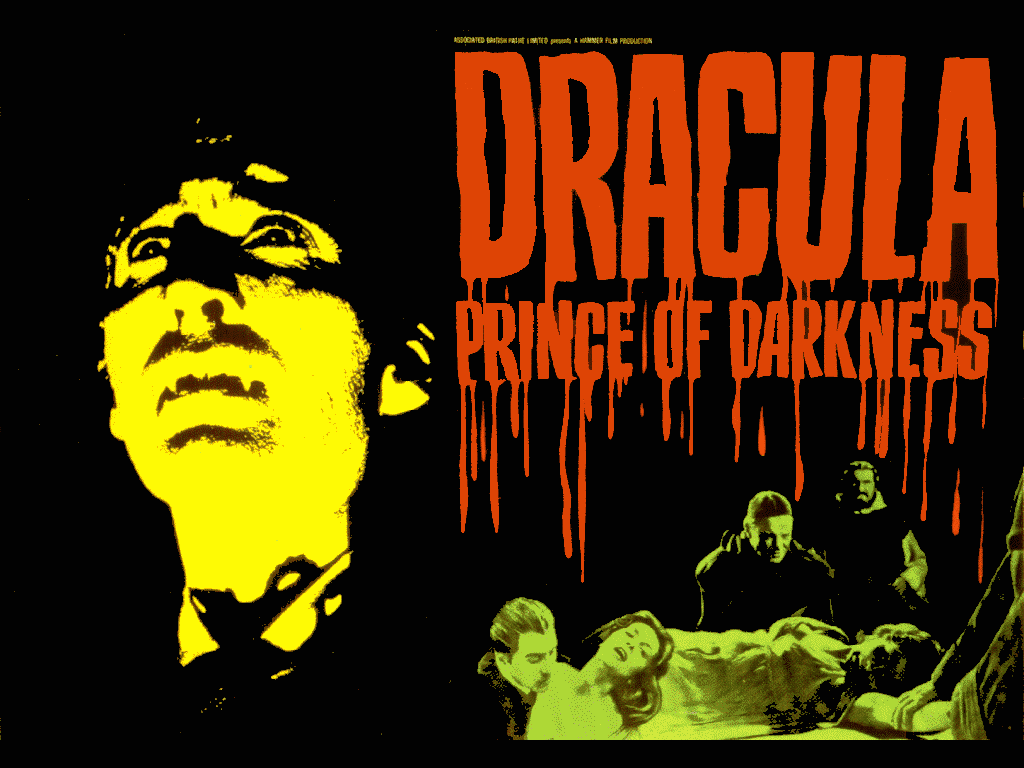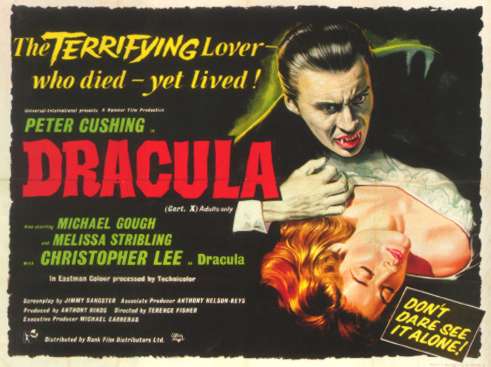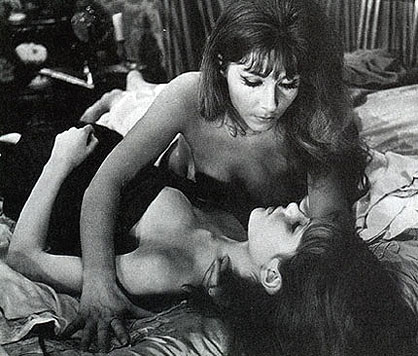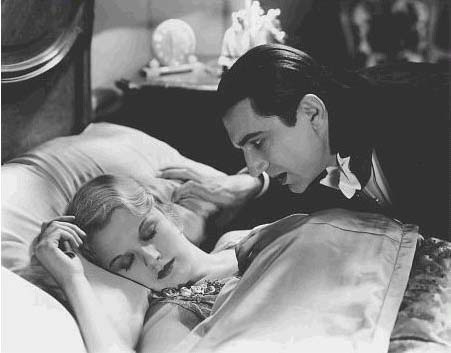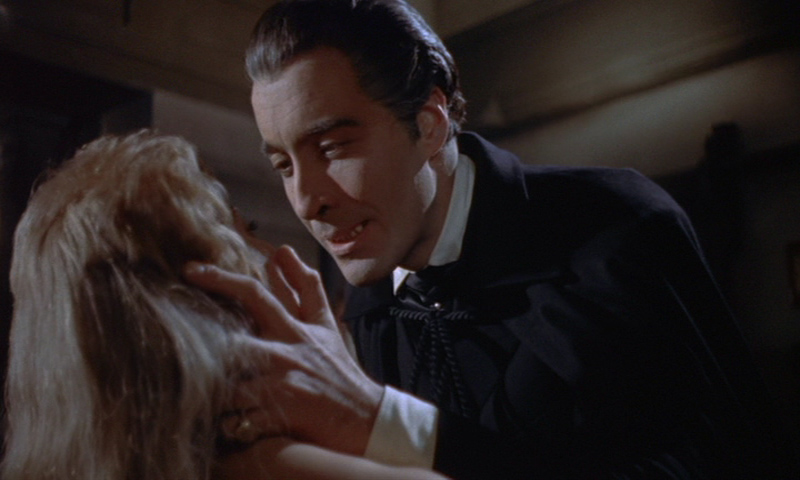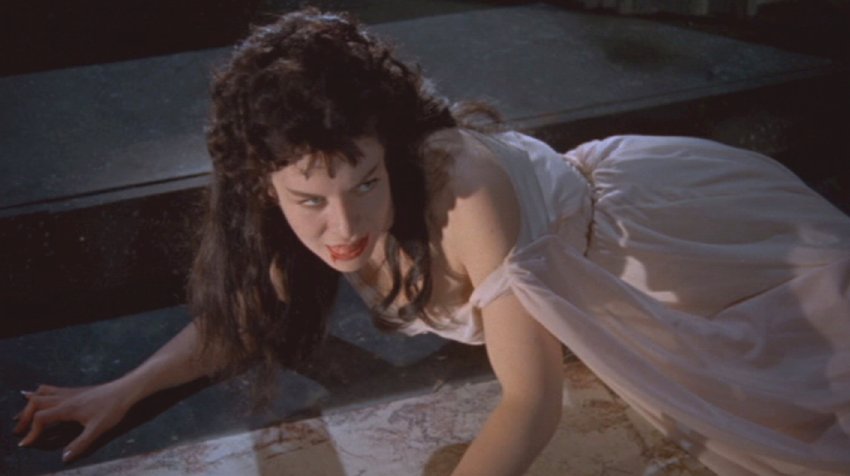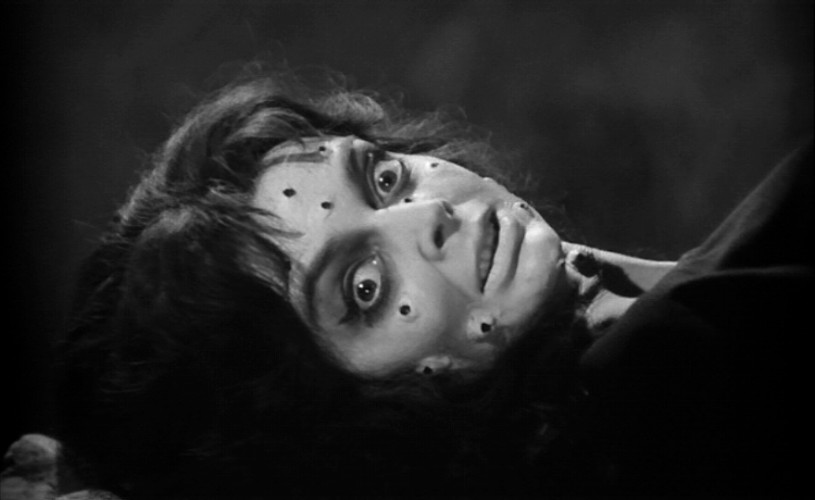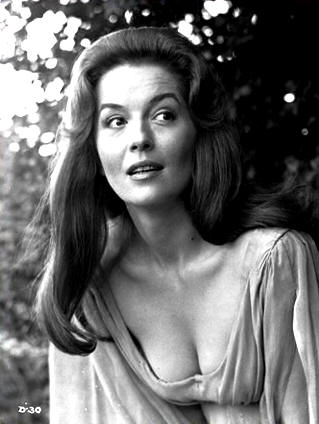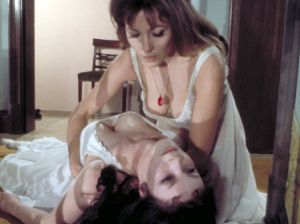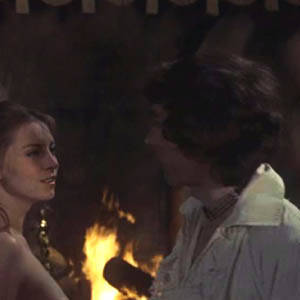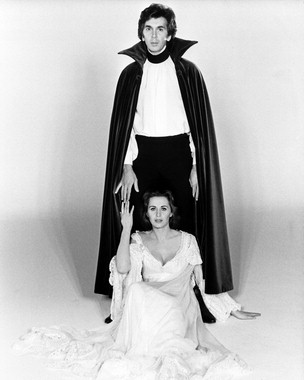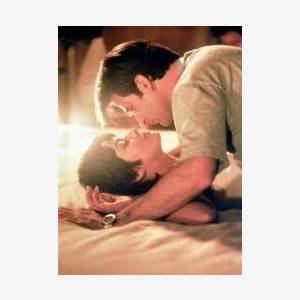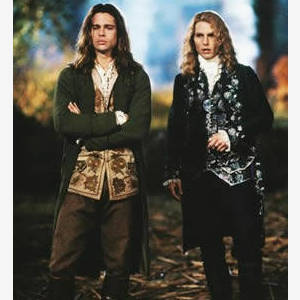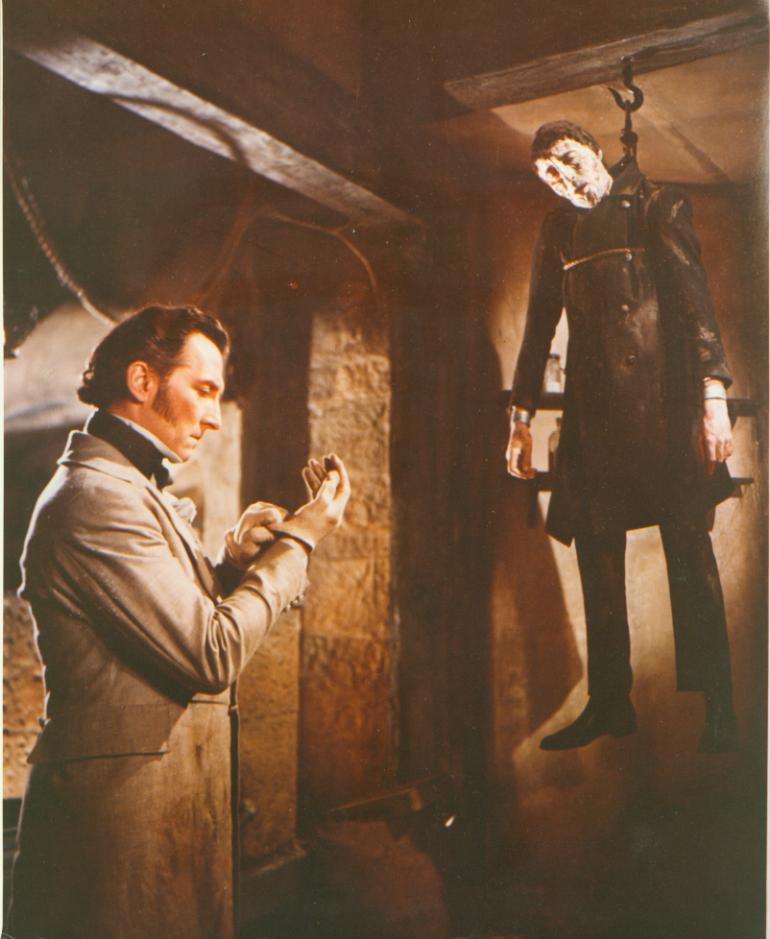
Cinefantastique celebrates the horror stars’ birthdays with retrospective interviews regarding their work together on HOUSE OF THE LONG SHADOWS, THE OBLONG BOX, and SCREAM AND SCREAM AGAIN.
Horror and fantasy acting legend Christopher Lee (the STAR WARS prequel trilogy, LORD OF THE RINGS) shares a May 27 birthday anniversary with the late “Merchant of Menace” Vincent Price (EDWARD SCISSORHANDS, HOUSE OF USHER); their frequent co-star, the late Peter Cushing, was born on May 26. To celebrate their 100th (Vincent), 98th (Peter) and 89th (Sir Christopher) birthdays, here are some of the comments that Lee and Price made in the mid-eighties about their last film together, THE HOUSE OF THE LONG SHADOWS. The movie was something of a horror milestone as it also featured horror star John Carradine (HOUSE OF DRACULA); unfortunately, despite the teaming of these four horror greats, the picture was very poorly conceived and executed, so it was no big surprise that it was never released to theatres in America.
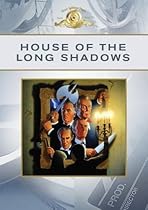
MGM recently made the film available as a bare bones DVD-on-demand through Amazon; apparently the quality of the transfer makes the film completely unwatchable. George Reis at DVD Drive-In calls it “probably the worst looking product ever to bare the MGM logo, with a far inferior transfer than the one used for the old VHS release!”
This is rather a shame, since the joy of seeing Price, Lee, Cushing and Carradine acting together in even a badly written and directed piece of claptrap like The House of Long Shadows would be a real delight for classic horror film fans. The DVD might also have been made more memorable if MGM had done the right thing and released it as one of their “Midnight Movie” DVD’s and included a few extras, such as the beautifully narrated Vincent Price trailer, the video press conference that Vincent Price, Christopher Lee and John Carradine held to promote the film at the Magic Castle in Los Angeles, or even an audio commentary with Sir Christopher Lee!
Interestingly enough, when I talked to Christopher Lee on his birthday in 1984, he felt the film was “most entertaining.” Apparently he has drastically altered his opinion since then, as he wrote in the 2003 edition of his autiobiography, The Lord of Misrule, that “The House of the Long Shadows was billed as the four masters of the macabre and there wasn’t a single marvelous speech to share between us. The direction was a blank and we agreed with the critics who shredded the film.” Perhaps, as Vincent Price told me, the film was ruined by a woman editor at MGM who apparently “took an axe to the film.”
CHRISTOPHER LEE on THE HOUSE OF THE LONG SHADOWS
 LAWRENCE FRENCH: You haven’t done a Gothic thriller like The House of the Long Shadows for quite some time.
LAWRENCE FRENCH: You haven’t done a Gothic thriller like The House of the Long Shadows for quite some time.
CHRISTOPHER LEE: Yes, my involvement is less and less these days. Until somebody comes up with a good story, whether it’s science fiction, fantasy or shocker. Whatever you want to call it. I’m just waiting for somebody to give me a film in that area, which is very worth doing.
LAWRENCE FRENCH: What was it about The House of Long Shadows that tempted you back to making a terror film? Was it the chance to work with your three co-stars, Vincent Price, Peter Cushing, and John Carradine?
CHRISTOPHER LEE: Yes, it was primarily the cast. I’ve made pictures with Vincent, I’ve made a great many pictures with Peter, and I had done one picture, called Goliath Awaits, with John Carradine. I had never worked on a picture with all three of them. I don’t think any of us had worked together in the same picture before. This was a first. Hopefully, not a last, but certainly a first. When Vincent, John and I were being interviewed for television, at the Magic Castle in Los Angeles, somebody asked Vincent if we would be doing more pictures together, all four of us. He said, “Yes, we’d be delighted to, but they better hurry up!” (Peter was not there, as he lives in England, and hates to travel). So it was the cast, then it was the story. I thought the story was most entertaining, most amusing, with its adequate share of thrills and chills, and there is a remarkable twist in the story, which nobody quite expects, that I think gives it its major value. The one thing about this picture that is of the utmost importance is that the audience should know before they see the film, what kind of picture they’re going to see. If they think they’re going to see a 100% terror movie, they aren’t and I think that should be made clear. If they think they’re going to see a 100% comedy, they aren’t, and I think that should also be made clear. I think, for lack of a better phrase, it should be described very clearly beforehand as a black comedy, which is exactly what it is. Audiences from my experience, don’t like to go and see films expecting one thing and then getting another. The film ran for a very short time at a theatre in London and was taken out because the theatre concerned was already booked with its next film. Apart from that very short run, it’s never been seen, except at film festivals. One in Spain, one in France, and I think one in Germany. In every case it has been extremely well received. The public enjoyed it immensely, because they knew what kind of picture they were going to see.
LAWRENCE FRENCH: Were you aware of the reputation of director Pete Walker? His past films (such as House of Whipcord and Schizo) are not very good and are quite graphic and gory.

CHRISTOPHER LEE: No, I didn’t know this. Having not seen any of his previous films, I can’t comment on them. But I didn’t know that until some months afterwords, somebody told me that he had done some very violent pictures and even did some softcore films, or something in that area. However, that’s not quite the point. If you have a competent director, a good crew, and the crew was excellent, a cast which certainly knows what they’re doing in this particular area, as well as other actors, like Richard Todd and the very delightful ladies who are in the film, and everyone works together in a story that is amusing, exciting and, at times, very scary, I think you have the recipe for a very good film, which is what we ended up with. I saw it at a private screening in Rome, nearly two years ago and I thought it was most entertaining, and worked as well as I could possibly have hoped it to do. The people who have seen it at the festivals, knowing what they were going to see, a black comedy with an unexpected twist and the veterans at work, have been absolutely delighted with the picture. Why it isn’t being shown I have no idea. All I can tell you is that at the (1984) Cannes Film Festival my wife asked Yoram Globus, one of the heads at Cannon Films, what had happened to the picture and he said it was going to come out on cable TV in October.
LAWRENCE FRENCH: When I talked to Cannon’s publicity people in 1983, they told me the film was going through marketing tests.
CHRISTOPHER LEE: I’ve never been able to find out what a marketing test is! I mean do you get people who sit around a table with rows of figures in front of them, or strange mystic symbols, who then make obtuse calculation in a room, saying this film will appeal to this audience, and it won’t appeal to that audience, then come up with an answer and say, “yes, we will show it,” or “no, we won’t show it.” I understand the value of this, but there’s also that imponderable that really nobody knows until the public get a chance to make up its own mind. You cannot calculate the public’s reaction by sitting around a table and talking figures.
LAWRENCE FRENCH: Apparently they put the figures they had into a computer which came up with a projected gross that wouldn’t justify the cost of releasing the film.
CHRISTOPHER LEE: A computer! That really just proves what I’ve been saying. I’m not going to take issue with these gentlemen, because it’s their job, and I know very little about it. I’m merely a creative person. Yet, when you say a computer makes the decision, you’re into the realms of fantasy. Real fantasy, as opposed to film fantasy! How can a machine possibly predict what a man and a woman, or a boy and a girl are going to like or not like? We’re talking about the reaction of the public watching a film. To me, the fact that this sort of thing is fed into a computer is a disastrous sign for the future of the film industry. It’s like the famous “Q” rating which exists in television, where they feed the names of actors and actresses into a computer, and the computer tells them whether that actor or actress is significantly popular to warrant putting them in a series. Ask the public, don’t ask a computer!
LAWRENCE FRENCH: I would think that the combined value of your four star names alone would justify releasing the film.
CHRISTOPHER LEE: Yes, I quite agree. It’s a mystery. I firmly believe that if this film is given a proper promotion and representation to the public, it would do extremely well, because it’s a very entertaining movie. Together we have made a considerable number of pictures. We worked it out one day, and I’ve made over 150 now, Vincent’s done about 120, Peter’s done 110 and John said he’s made 430 pictures! That’s quite possible, because when he started out, you made two or three pictures a month. They were very quick in those day, jumping from one studio to another.
LAWRENCE FRENCH: During the filming of your death in the movie, Vincent was apparently watching and was quoted as saying, rather gleefully, “I just love to see Chris bleed.”
CHRISTOPHER LEE: Yes, that’s typical of Vincent and his humor. Indeed, all of us would have said the same thing about each other. One must maintain a very relaxed attitude towards this kind of film. If you’re making a film with people whom you respect enormously as actors, and people whom you’re very, very fond of as individuals, then one is bound to have a lot of joshing and fun on the set. That’s the best way to make a picture of this kind. So he may very well have said that, it wouldn’t surprise me at all. If he did, I certainly go along with it, because I certainly would have thought of something similar to say at the time of his demise in the film. I think that’s a very funny line and very appropriate.

LAWRENCE FRENCH: Of course, you did get to push Vincent into a vat of acid in Scream and Scream Again.
CHRISTOPHER LEE: Yes, that’s right and the yellow tinge of the acid made it look like Vincent had suffered some terrible natural mishap on a grand scale, so the first take we did was completely ruined by our both laughing as we fought to the death. The three of us were in that as well, but not in the same scenes. I played the head of British Intelligence, who was an alien.
LAWRENCE FRENCH: You were supposed to be an alien? I didn’t realize that when I saw the film.
CHRISTOPHER LEE: Oh yes, I am an alien. I have this very responsible job as the head of British Intelligence. Vincent’s character was an alien, as well. He is one, and I’m another. I’m really there to pay him off for all the mistakes he’s made with his experiments. If that wasn’t clear, it was either in the cutting or the story, because that indeed was meant to be the solution. It is a fault that lies, not with us, but elsewhere–in the way the film was put together.
LAWRENCE FRENCH: It was made for Amicus and producer Milton Subotsky who always liked to tamper with his films in the cutting room. Later on, didn’t Milton Subotsky ask you to appear in The Monster Club?
CHRISTOPHER LEE: Yes, I got a message from my agent asking me if I would like to do a picture with Milton Subotsky and I said, “Yes, after all these years, what does he have planned?” So he told me he’s going to do a picture called The Monster Club. I said, “That’s enough. We need go no further!”
LAWRENCE FRENCH: That’s funny, because Peter Cushing also turned him down, but Vincent said he thought it was a funny script and decided to do it, as did John Carradine.
CHRISTOPHER LEE: Well, people do what they want to do, or what they enjoy doing. If Vincent wanted to do it and it was a story which appealed to him, fine, then do it. It might have been, for all I know, a marvelous script, but a title like that would put me off immediately. I hated the title of a picture I did with Milton, called I, Monster. I thought it was a dreadful title, and I never stopped telling him that. It was an absolutely absurd title, because it was the story of Jekyll and Hyde. In that respect, it was very good, because what we did was very close to Stevenson’s story.
LAWRENCE FRENCH: Except you were not called Dr Jekyll.
CHRISTOPHER LEE: Yes, they changed it to Dr. Marlowe and Mr. Blake, while everyone else had the correct names from the Stevenson story. Don’t ask me why. I’ve long since ceased trying to fathom the mysteries of why people do certain things in this business. But I thought it was an appalling title, and Milton, on the other hand, thought it was a very good one. He said it was a good marquee title, so we agreed to disagree.
VINCENT PRICE on THE HOUSE OF THE LONG SHADOWS

LAWRENCE FRENCH: You got to act with Christopher Lee, Peter Cushing and John Carradine for the first time in The House of the Long Shadows, and although I felt it could have been a much better film, Christopher Lee told me he thought the film was quite entertaining.
VINCENT PRICE: I did too, we all thought it was good, until this woman took an ax to it! It has to be recut. I really don’t know what she was doing. She called me up and said, “will you go out and promote the film”, and I said, “If you show the film that we shot,” because it’s just not the same film. She cut out all of the comedy payoffs to everything. As you know, we were all hired actors to scare Desi Arnaz, Jr. out of the house, people who just came in to do a job. After everything that happens in the house, Chris Lee getting killed, and all the other things, suddenly we all come out and take a bow, and it is revealed to Desi that we are all actors. We had these marvelous comments on all the things that happened, and that was all cut out. They tried to turn it into a horror picture and destroyed it.
LAWRENCE FRENCH: When I saw it the bows you all take at the end are still in the film. It reminded me of the Fritz Lang film, The Woman in the Window.
VINCENT PRICE: That’s the way it should have been done, so maybe they’ve put it back together. But I think there was way too much of Desi Arnaz in the beginning, and it does take too long to get into the story, so I don’t quite understand it. I don’t know if it was Golan and Globus (the producers) who wanted it to be a horror picture, or what. If they did, then why did they shoot it as a comedy?
LAWRENCE FRENCH: Is it true that you were watching Christopher Lee’s death scene, and said, “I just love to see Chris bleed.”

VINCENT PRICE: (laughing) Yes! We’re great friends you know. We both find each other hysterically funny. Before we met I heard he was very pompous, and I was really worried about meeting him. It was on The Oblong Box, the first film we did together. Well, we took one look at each other and started laughing. We spend our lives screaming and laughing at each other and having a wonderful time. I’m really devoted to him. I think he’s really one of my few very good friends in the business.
LAWRENCE FRENCH: I imagine that’s one reason why you wanted to do the picture, even if it wasn’t first-rate material, because you got to work with Christopher Lee, Peter Cushing and John Carradine.
VINCENT PRICE: Oh yes, absolutely. It was like a marvelous class reunion. John is an adorable character, who I’ve known for about 40 years now. Peter is unfortunately, a little gloomy, because of his wives death, but he’s still a sweet man.
LAWRENCE FRENCH: It’s too bad about Peter Cushing, because Christopher Lee was telling me how’s he’s really just waiting to join his wife, Helen.
VINCENT PRICE: I know, it’s like, “are you kidding?” It’s very sad. He’s just waiting to die, but he’s going to have to wait a long time. He’s going to live to be 100 years old, but Peter and I have done a lot together.
LAWRENCE FRENCH: What else, besides Madhouse?
VINCENT PRICE: We did a marvelous radio show in England called Aliens of the Mind (broadcast in six parts in January, 1977) and we were in a picture called Scream and Scream Again.
LAWRENCE FRENCH: Yes, but you never appeared in any scenes with Peter Cushing in Scream and Scream Again. Peter Cushing was only on screen for about two minutes!
VINCENT PRICE: Yes, and Chris Lee was in that one, as well.
LAWRENCE FRENCH: One of things Christopher Lee fervently believes in, is the reality of evil and the dark forces. You’ve played several very evil characters, from the Satan-worshipping Prince Prospero, to Satan himself.
VINCENT PRICE: Satan is the ultimate hero.
LAWRENCE FRENCH: But do you believe in evil or the occult?
VINCENT PRICE: I don’t believe in the occult, but I do believe there is a power of evil. How do you read the Bible? It is divided equally between good and evil. You can’t have good without evil, because there’s no conflict. One of the lectures I do is basically that; trying to explain that the role of the villain has a definite part in the history of drama. He is the fellow who creates the suspense and the conflict. You can’t have drama without suspense.
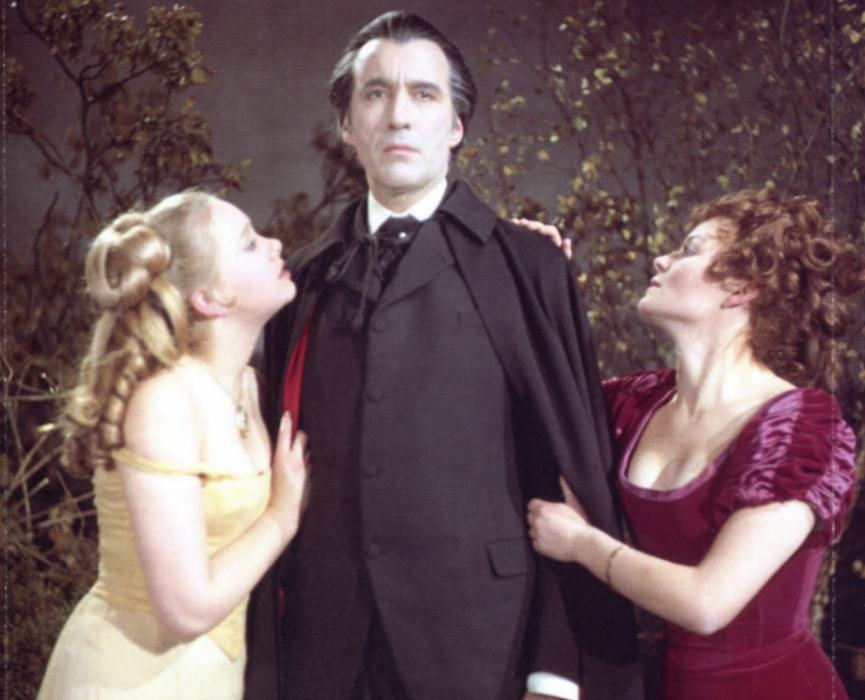
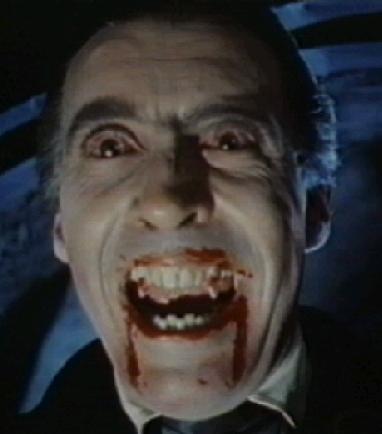
 Christopher Lee is celebrating his 87th birthday today, and it appears that the icon of screen terror is busier than ever. He has finished roles in several movies that have yet to be released, including a large part opposite Colin Farrell in TRIAGE, directed by Danis Tanovic (an Oscar winner for NO MAN’S LAND). He is also re-teaming with director Tim Burton and Johnny Depp in Disney’s upcoming ALICE IN WONDERLAND, where he will play the the Jabberwock . It also appears that Lee is very close to beginning production on the long-tauted re-imagining of his own favorite film, THE WICKER MAN, now re-titled COWBOYS FOR CHRIST. Mr. Lee talks about several of these projects in a 16- minute video message to his fans that can be seen at the
Christopher Lee is celebrating his 87th birthday today, and it appears that the icon of screen terror is busier than ever. He has finished roles in several movies that have yet to be released, including a large part opposite Colin Farrell in TRIAGE, directed by Danis Tanovic (an Oscar winner for NO MAN’S LAND). He is also re-teaming with director Tim Burton and Johnny Depp in Disney’s upcoming ALICE IN WONDERLAND, where he will play the the Jabberwock . It also appears that Lee is very close to beginning production on the long-tauted re-imagining of his own favorite film, THE WICKER MAN, now re-titled COWBOYS FOR CHRIST. Mr. Lee talks about several of these projects in a 16- minute video message to his fans that can be seen at the 